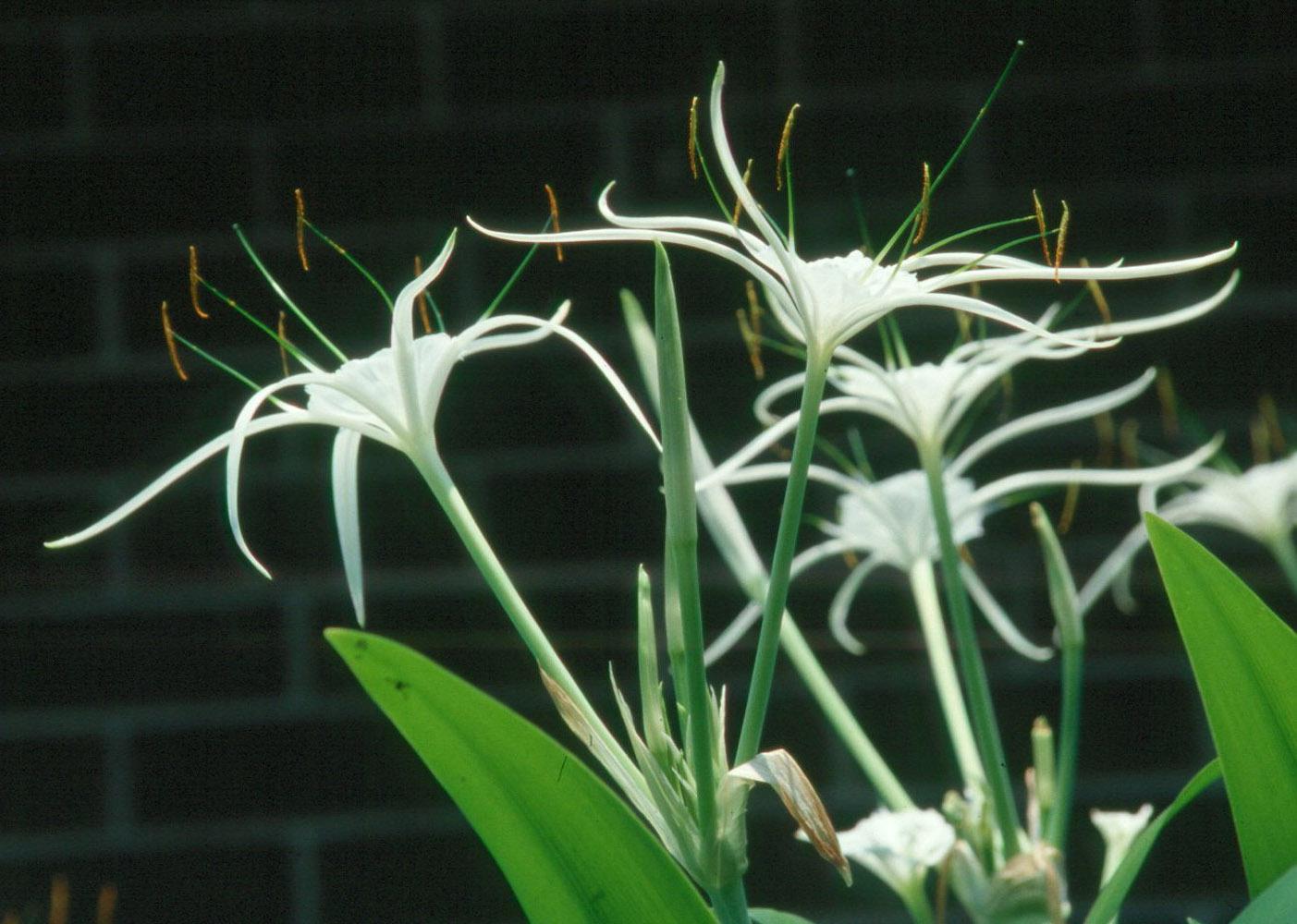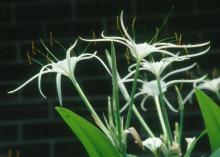Information Possibly Outdated
The information presented on this page was originally released on January 7, 2002. It may not be outdated, but please search our site for more current information. If you plan to quote or reference this information in a publication, please check with the Extension specialist or author before proceeding.
Bold gardeners grow native spider lilies
By Norman Winter
MSU Horticulturist
Central Mississippi Research & Extension Center
Many books are written to build readers' self esteem, and I want to do the same for bold gardeners considering doing something radical by saying it is cool to have spider lilies.
Since the first of the year is kind of a down time in the garden, I want to give you something to ponder for spring. Consider planting one of the native spider lilies. The first spider lily you think of may be the red, fall-blooming Lycoris. Although they grow well here, these are from Japan.
Consider the white, summer-blooming Hymenocallis species. I imagine our Creator looks down from above and wonders why this exquisite flower rarely appears in our state's gardens.
Hymenocallis liriosome is probably the native most often encountered in Mississippi. These are found growing in boggy areas with huge, tantalizing-fragrant white flowers that are nearly 7 inches wide. While these are found in wet areas, they will do fine in well-prepared, upland soils.
Another species, Hymenocallis caroliniana, is native from Georgia to Indiana and Louisiana. Reference books suggest it skipped our border, but it has been transplanted a lot, so no one knows for sure. But who cares since it is native to the Southeast and does great here, too!
Hymenocallis crassifolia is another native to the Southeast and is listed among those selections available from growers who produce spider lilies. One very old and popular variety worth mentioning is Tropical Giant. It may be evergreen south of a line from Picayune to Lucedale, but elsewhere it will go dormant.
There are probably 40 spider lily species worldwide with many found in the West Indies and South America. Our natives are just as exotic-looking as the rest and offer superb landscape attributes.
One import that may steal the show is called Hymenocallis narcissifolia. Known as Peruvian Daffodil, it is native to the Andes of South America. Its flower is composed of the spidery-like petals but it also has a large frilly cup with orange in-curved stamens. This spider lily is deciduous, allowing it to be grown over most of the state.
An Internet search will demonstrate that this is a hard group of species and hybrids to classify, but it is a great native plant for the garden. The deep green, sword-like foliage presents a nice texture in the garden, and the 2-foot tall stems usually bear from two to nine fragrant flowers.
Choose a site in full to part sun for planting. Spider lilies can tolerate wet feet areas, but prefer a bed prepared by incorporating 3 to 4 inches of organic matter. It is best to plant after the last frost. Set the bulbs with the tips 1 inch below the soil surface, and space plants from 12 to 24 inches apart.
Keep the plants well watered, especially during the bloom period. Most of the state will grow deciduous types. Remove the foliage once it turns brown in late summer.
Spider lilies are perfect around water features in the landscape. They excel in a tropical-style garden with bananas, elephant ears and ferns. Louisiana iris lovers may want to have bold drifts of white spider lilies separating some of that plant's bright purples, blues or yellows.
As you are snuggled in front of the January fire dreaming of new spring plantings, do consider some native white spider lilies. I guarantee they will enhance the beauty of your landscape.



